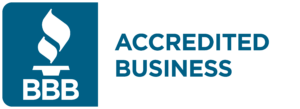Are High-Deductible Plans Placing Employee Health at Risk?

Chronic disease management is not only expensive and complex but it’s key in improving patient outcomes and minimizing overall healthcare expenditures. Currently, the price tag of chronic illnesses accounts for 72 percent of the $2.2 trillion spent on healthcare in the U.S. each year. Diabetes is one such chronic condition that is so common, 30 […]
National Women’s History Month: Five Influential Women in Medicine

For decades, various female-activist groups advocated for the inclusion of women’s history in classrooms across the nation. It wasn’t until 1980 that President Carter issued the first Presidential Proclamation to declare a National Women’s History Week. By 1986, 14 states were honoring women’s accomplishments throughout March, and a year later Congress officially declared March as […]
Telehealth: Transforming the Value of Employee Benefits

When implementing a telehealth program into a benefits package, it has the potential to transform an employee’s access to healthcare. Instead of waiting weeks for an in-office visit, employees can now address concerns quickly and reduce the utilization of unnecessary emergency services. Telehealth is a common benefit these days, but industry professionals weren’t always […]
Heart Failure Awareness Week

As a continuation of Heart Month, this week is dedicated to raising awareness for Heart Failure. Heart Failure is a common condition resulting from a damaged or weakened heart, often from a heart attack or years of cardiovascular disease. While there is no cure for heart failure, it is preventable. Honor Heart Failure Awareness Week by […]
Our Hearts are Healthier Together

In 1963, President Lyndon B. Johnson named the month of February as American Heart Month to raise awareness about Cardiovascular Disease (CVD) within the American population. After many decades, CVD is still prevalent. Affecting nearly 48 percent of the American population, CVD is the underlying cause in 1 out of every 3 deaths. For American Heart Month, the National Heart, Lung and Blood Institute (NHLBI) encourages you to join or create a heart-healthy pact with family and friends. Living a healthier lifestyle is easier when […]
Employers Seek Alternative Solutions to Solve Rising Benefit Plan Costs

Rising prices for benefit plans have employers considering creative solutions to lower healthcare expenses. According to the Kaiser Family Foundation, annual family premiums for employer-sponsored health insurance rose 4 percent to average $21,342 in 2020. The cost of health benefits continues to increase year over year with no signs of stopping. With these increases, […]
The Real Impact of Chronic Diseases in America

A recent poll shows that a majority of people aren’t aware that over half of all Americans are affected by a chronic disease or of the economic impact it has in our country. When thinking about illnesses that impact a person’s health, we often think of common ones such as a cold. For most people, the […]
Conquering Your New Year’s Resolutions

The New Year is approaching, prompting declarations and New Year’s resolutions from the masses. Although many people don’t bother with New Year’s resolutions, most of us promise ourselves – with good intentions – that we will eat healthier, get more exercise or save more money. But, unsurprisingly, four out of the five people who make New Year’s resolutions end up breaking them. One-third of those people won’t even make it to the end of January before slipping back into comfortable habits. If […]
Winter Wellness

As the earth tilts the Northern Hemisphere farther away from the sun, we experience less daylight and chilly weather – encouraging us to stay indoors and allowing our appetites to indulge in rich seasonal meals. According to studies, people tend to gain weight during the winter months due to several potential factors such as […]
Employer Provided Healthcare Isn’t Making the Cut

A new study shows that after years of modestly-growing premiums, 2017 brought a sharp price hike – increasing the economic strain on many Americans. The study from The Commonwealth Fund shows that beginning in 2017, employees started to spend a larger percentage of their income on employer-sponsored healthcare. For example, the 2017 average employee premium contribution for single and family health plans consumed nearly seven percent of the median income, while wages remained fairly stagnant. From 2016 to 2017, […]

